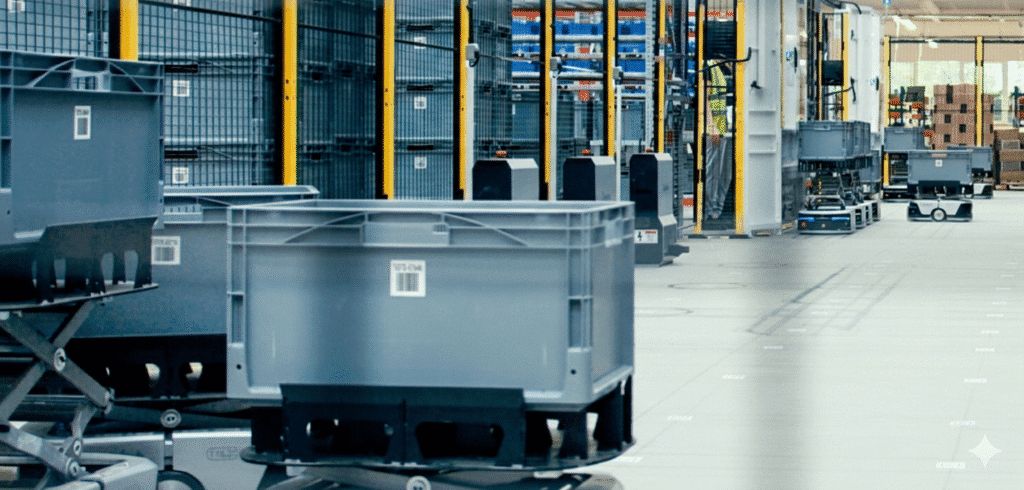Switching 3PL Without Losing Momentum: Migration Playbook for Scale-Up

Switching 3PL Without Losing Momentum: Migration Playbook for Scale-Up
Switching third-party logistic (3PL) providers is one of the most consequential decisions a scaling retailer can make. For high-volume e-commerce companies, the right fulfilment partner can accelerate growth; the wrong move can create costly disruption. This whitepaper provides a structured migration playbook for retailers preparing to switch 3PL in the UK, outlining the risks, the technical and operational requirements, and the steps to maintain business momentum.
Why Retailers Switch 3PLs
Brands rarely move fulfilment partners on a whim. The decision usually follows sustained operational friction or a need for greater scale. Common triggers include:
- Capacity constraints: a 3PL is unable to flex during peak demand.
- Technology gaps: lack of API integration with Shopify, Magento or ERP systems.
- Service failures: missed SLAs, high error rates, or slow carrier performance.
- Cost misalignment: charges that erode margin without clear ROI.
- Strategic growth: entering new markets or expanding SKU ranges that current providers can’t support.
Research published by Supply Chain Digital found that only 18% of UK companies are satisfied with their third-party logistics providers. This underlines how frequently service issues or strategic misalignment force brands to review and ultimately replace their partners. For scale-up retailers, migration is less about dissatisfaction and more about readiness to unlock growth.
Risks of a Poor Migration
Fulfilment migration, if mishandled, can damage customer experience and brand equity. Key risks include:
- Inventory disruption: delays or inaccuracies in stock transfer.
- Data loss: failure to migrate product catalogues, SKUs, and order histories correctly.
- Operational downtime: shipments paused during the handover.
- Systems impact: broken integrations causing order failures.
- Team disruption: uncertainty and miscommunication during the transition.
Mitigating these risks requires careful planning, ownership of digital assets, and robust testing before go-live.
The Scale-Up Migration Playbook
Step 1 – Define Objectives and Requirements
Before issuing termination notices, clarify your non-negotiables. Volume thresholds, service guarantees, cut-off times, packaging flexibility, and reporting standards should all be mapped out. For scale-ups, alignment on scalability and future requirements is critical.
Step 2 – Consolidate Asset Ownership
Retailers must own their platforms, domains, and data. Case studies show that failure to retain admin access to platforms such as Google Analytics, Search Console, or WMS domains has led to loss of visibility during migrations. Establish a master access document before migration begins.
Step 3 – Build the Transition Timeline
A phased transition reduces risk. The typical migration timeline includes:
- Audit: validate SKUs, carriers, and system integrations.
- Shadow period: both old and new 3PLs fulfil orders simultaneously for 1–2 weeks.
- Stock transfer: staged movements, with high-volume SKUs prioritised.
- Cutover: switch all orders to the new partner on an agreed date.
This phased model ensures continuity of fulfilment while stress-testing the new partner’s systems.
Step 4 – Technical Handover and Integrations
Ensure API or EDI connections are tested in sandbox environments before cutover. Shopify and Magento migrations, for example, require order routing rules, stock synchronisation, and returns workflows to be fully validated. Best practice includes parallel testing of both systems before switching routing live.
Step 5 – Operational Training and Communication
Change management is often underestimated. Warehouse staff, customer service teams, and carrier contacts need to understand new processes, escalation points, and reporting dashboards. Internally, a clear communication plan minimises disruption to customer-facing teams.
Step 6 – Monitor and Optimise
After go-live, track fulfilment KPIs daily for the first month: pick accuracy, on-time despatch, carrier performance, and WISMO (Where Is My Order?) queries. Benchmark against legacy performance and flag variances early. External tools like Parcel Monitor and Metapack provide independent verification of service performance
The Role of Technology in a Smooth Migration
Technology is the backbone of modern fulfilment migration. Key considerations include:
- WMS and OMS alignment: ensuring the new 3PL’s system communicates with your order stack.
- Analytics and reporting: preserving historical data for forecasting and continuity.
- Carrier routing: confirming multi-carrier flexibility and documentation readiness.
Retailers who prioritise technology alignment during migration are more likely to experience an uplift in performance rather than disruption.
Cultural and Strategic Fit
While SLAs and technology matter, the cultural alignment between brand and provider is equally important. Long sales cycles in e-commerce logistics mean retailers need confidence that their 3PL can act as a true partner, not just a vendor. Migrating to a 3PL that shares your growth vision reduces the likelihood of repeating the switch within 18–24 months.
Measuring Migration Success
A successful migration is not just defined by “no disruption.” Key success indicators include:
- Zero missed orders during the transition.
- Improved SLA compliance versus the previous provider.
- Reduction in WISMO queries.
- Clear cost-to-serve visibility.
- Demonstrated scalability during peak or promotional periods.
Independent tracking of these metrics allows retailers to verify that the migration delivered measurable improvement.
Final Thoughts
Switching 3PLs is never risk-free, but for UK scale-up retailers, it is often a necessary step to unlock growth. By following a structured fulfilment migration playbook, brands can minimise disruption, preserve customer trust, and accelerate into their next growth phase.
Looking for a 3PL upgrade? Book a call and speak with our fulfilment experts.


